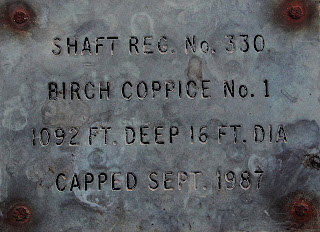On the
BBT forum, Chris Allen posted a thread which asked: 'how did you discover Big Big Train?'
There were enough responses (150 or so individual ones) for some themes to emerge which I thought were worth some analysis and some brief comments.
The first thing of interest was the wide diversity of different channels for finding out about music. There were more than 20 different routes to finding out about BBT.
Five main routes stood out from the others. These were:
- Personal recommendations from friends or family (16%)
- Prog and Classic Rock covermount CD's (12%)
- Links to other bands (12%)
- Internet radio shows (12%)
- Prog rock websites (11%)
Other popular routes were Spotify (6%) and iTunes and Amazon recommendations (each at 3%). Our own downloads (particularly the 23 minute freebie of The Underfall Yard) and the Progstreaming website also received a few mentions.
Surprisingly, some of the best-known social media platforms (Facebook, Twitter, YouTube) were hardly mentioned and Soundcloud and Last FM received only one mention each.
It was interesting that old-fashioned 'word-of-mouth' is still the most important factor. Word-of-mouth has been facilitated by new technology (eg the ability to easily share music and information and by social-networking), so it may be that there is some crossover between these things.
One listener mentioned that his GP had recommended our music which was intriguing. ('Doctor, Doctor, I'm poorly what can you give me?' 'I am prescribing you a dose of progressive rock'...)
Internet radio was a popular route, so hats-off to those who put their shows and podcasts together and get them online. I suspect that these shows take a great deal of time and trouble to produce and it is pleasing to see that they result in increased music appreciation. The recent increase in progressive rock on digital radio shows will also surely have an impact.
Big Big Train has a lot of links with other bands through its members and through past associations (eg XTC, Spock's Beard, Anthony Phillips, Genesis, Frost) and some of these links have clearly been influential (one listener described it as 'following the breadcrumbs'). So, for bands thinking of inviting higher profile guest musicians, it may be a good idea to follow this through.
Distribution of music through covermount CD's on Prog, Classic Rock and the Classic Rock Society also appears to pay significant dividends (although, as with all of these routes, the material being distributed has to be of good quality.)
Amongst the listeners who have been following us since earlier days, Cyclops mail-order received several mentions. Malcolm Parker and Cyclops / GFT clearly played quite a part in sustaining an interest in progressive rock before the internet really took off.
Finally, one person did mention seeing BBT live back in the 90's in the Netherlands. I'm a bit sceptical about whether live performances actually create many new listeners as I suspect they are more about playing to the already converted. However, the promotional effort around live shows must also be of benefit. This will be interesting for BBT as we go forward.































